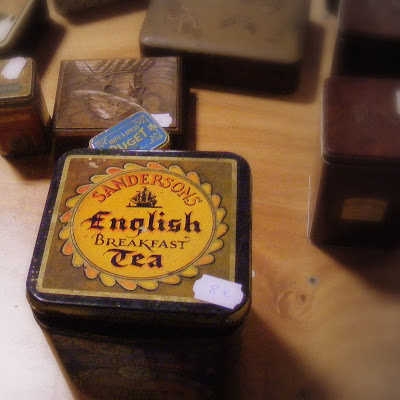
Bwhat?! is the name of an arts festival on the theme of the BOX that took place in June 2011 in Aurillac (Cantal, FRANCE). It was initiated by the section européenne of the Lycée Saint-Eugène (Ensemble Scolaire Gerbert), in partnership with the Lycée de la Communication Saint-Géraud, the La Manufacture dance school, and the Société La Haute-Auvergne. The hundreds of "sources of inspiration" below are for all you budding artists to use! Feel free to contribute comments. ENJOY!
Saturday, July 31, 2010
Source of inspiration 172 (click on this title!): Double bass
http://www.youtube.com/watch?v=tYKahj7RGys
Can a wash basin be turned into an instrument?
First, when I saw this source of inspiration, I thought "Oh, this is really cool" and I opened all the links… But they opened all at the same time and I got the impression that all the different songs and sounds together made one big show...
I really like the photo above and the ambiance of the Jug Bands. Jug bands are a mix of traditional and home-made instruments. When I listen to jug band songs I really get the feeling of being in the USA.
The instrument on this photo is a washtub bass, the home-made version of the double bass. The double bass is really a strange box-like instrument because it is not very beautiful, and it is so very BIG! When I was a bit younger, I saw a very little skinny man playing double bass and it struck me as very peculiar, really.
I think a washtub bass is more fun than a double bass and just as important, because it gives the bass line and the rhythm.
“The Double Bass” by Patrick Süskind is the story of a double bass player who describes the history of his instrument, his role in the orchestra, and the relationship between a player and his instrument. Later on, we understand that he is going a bit crazy because he doesn't understand why the other players don't look at him, and why the girl who he has fallen in love with doesn't look at him. He has a cynical look on everything and everybody around him…
Julien Le Provost did a good interpretation in the play version (see the link above).
I think it is a good book/play, because it gives us an insight into what ordinary members of an orchestra might think and feel. In fact, if you think about it, most people in life feel like the double bass player sometime in their lives: a bit excluded or unimportant…
Article by Anne-Sophie Belbezet
Source of inspiration 170 (click on this title!): Barbecue
Source of inspiration 169 (click on this title!): Tissue box
Source of inspiration 165 (click on this title!): Coffee machines

Wednesday, July 28, 2010
Tuesday, July 27, 2010
Source of inspiration 162 (click on this title!): Box fruit

Source of inspiration 158 (click on this title!): Tea caddy

British tea tins are known as caddies. They are used to store tea leaves. They are air-tight to keep the tea away from damp. They are sometimes rather artistic boxes, made from wood, metal or porcelain, and some have become collectors’ items. They can be highly ornate and precious (reflecting the fact that tea was a precious commodity at first) or plain and mass-produced.
The first English tea caddies date from the mid-18th century when tea replaced coffee as the favourite beverage of the English.
Tea caddies are quintessentially British.
Artistic idea: recycle an ordinary box into a fabulous tea caddy!
Article by Camille Moins
Saturday, July 24, 2010
Source of inspiration 157 (click on this title!): Clock

Friday, July 23, 2010
Source of inspiration 155 (click on this title!): Oven


Source of inspiration 154 (click on this title!): Washing machine


Source of inspiration 150 (click on this title!): Cajon

Wednesday, July 21, 2010
Tuesday, July 20, 2010
Monday, July 19, 2010
Source of inspiration 143 (click on this title!): Monolith

http://en.wikipedia.org/wiki/Who%27s_Next






































